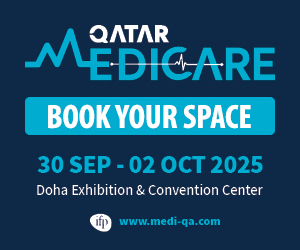Qatar’s pre-hospital emergency care has reached world-class standards, thanks to advanced protocols and real-time connectivity developed by the Ambulance Service at Hamad Medical Corporation (HMC). A state-of-the-art system now links paramedics in the field directly with hospital emergency departments, enabling the seamless transmission of live medical data en route.
This breakthrough allows emergency teams to better prepare for incoming cases, accelerating treatment — particularly in time-critical situations like cardiac arrest.
Ali Darwish, Assistant Executive Director of HMC’s Ambulance Service, showcased these developments during a recent appearance on Qatar TV. “This is the second phase of the ambulance journey,” he said. “It’s not just about transportation — we’ve built a medical bridge between the field and the hospital.”
Using a push-button system, paramedics can now share real-time vital signs and clinical updates, allowing hospital staff to activate response units in advance. For instance, in heart attack cases, the cardiac catheterization unit at Heart Hospital is often ready and waiting, eliminating delays in care.
“Previously, critical minutes were lost,” Darwish noted. “Now, patient updates happen while on the move.”
Smarter Triage, Faster Response
With Qatar’s population surpassing 3 million, accurate case prioritization has become vital. Today, all emergency calls are handled by trained paramedics following internationally recognized protocols, supported by computerized triage systems.
At the heart of this process is a smart algorithm that displays medical indicators on the dispatcher’s screen, ensuring each case is classified based on clinical urgency rather than personal interpretation. This ensures swift intervention for life-threatening cases while optimizing resource allocation for non-critical incidents.
Ambulances are dispatched accordingly — whether at high speed, in standard response, or by directing the caller to a nearby facility.
National Reach, Seamless Care
Darwish emphasized that HMC is working to expand emergency coverage across Qatar in line with rapid urbanization. “Our goal is clear: no region should be without fast access to emergency care,” he said. This includes growing the ambulance fleet, deploying vehicles strategically, and improving response times nationwide.
These efforts directly support Qatar National Vision 2030, reinforcing the country’s commitment to strengthening public health and social infrastructure. “This is more than a tech upgrade,” Darwish added. “It’s about improving quality of life.”
Investment in People and Technology
In addition to infrastructure, HMC continues to invest in continuous training for paramedics. Staff attend international conferences, participate in hands-on sessions, and stay updated on global best practices.
“Advanced equipment is only as good as the people using it,” Darwish stressed. “We focus on both — the tools and the expertise.”
Looking ahead, HMC’s vision is to redefine the ambulance itself. “We see it as a mobile emergency care unit — a hospital on wheels,” Darwish concluded. “From the moment we receive the call to the moment the patient arrives at the hospital, we deliver expert, integrated care that meets the highest international standards.”
Source: The Peninsula










































































